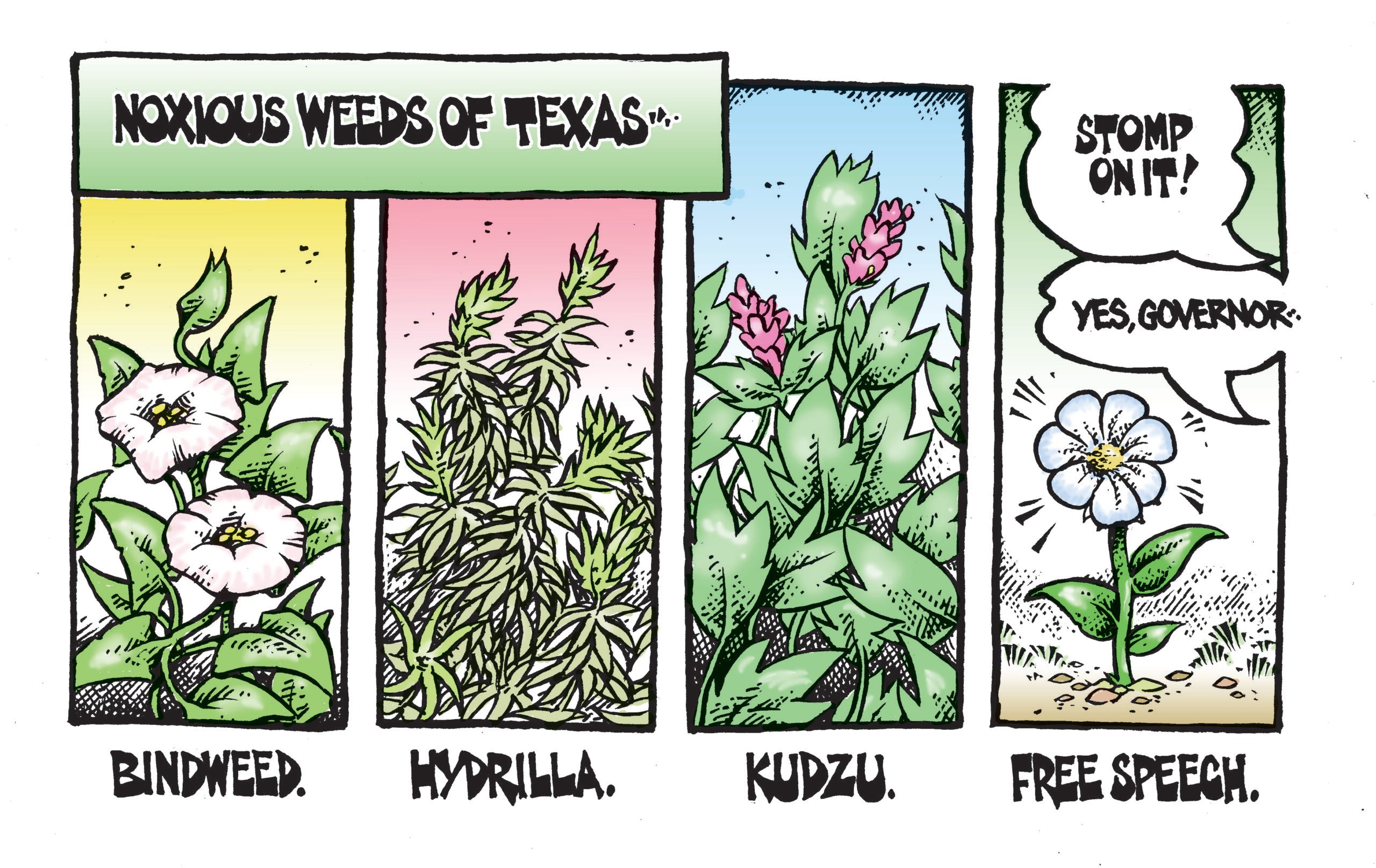ustxtxb_obs_1980_08_08_50_00002-00000_000.pdf
Page 4
Vol. 72, No. 15 August 8, 1980 “T -kt:-…, -V/ ,,..-m. …….., …… The Texas OBSERVER PUBLISHER, RONNIE DUGGER The Texas Observer Publishing Co., 1980 Incorporating the State Observer and the East Texas Democrat, which in turn incorporated the Austin Forum-Advocate. EDITOR Rod Davis ASSOCIATE EDITOR Matthew Lyon STAFF ASSISTANTS: Jenny Abdo, Beth Epstein, Susan Reid, Bob Sin dermann Jr. CONTRIBUTING EDITORS: Warren Burnett, Chandler Davidson, John Henry Faulk, Eric Hartman, Jack Hopper, Molly bins, Maury Maverick Jr., Kaye Northcott, Laura Richardson, Linda Rocawich, Paul Sweeney, Lawrence Walsh, Alfred Watkins CONTRIBUTING PHOTOGRAPHERS: Keith Dannemiller, Roy Hamtic, Hans-Peter Otto, Alan Pogue, Bob Clare, Phyllis Frede, Russell Lee CONTRIBUTING ARTISTS: Berke Breathed, Jeff Danziger, Dan Hubig, Ben Sargent, Mark Stinson A journal of free voices We will serve no group or party but will hew hard to the truth as we find it and the right as we see it. We are dedicated to the whole truth, to human values above all interests, to the rights of humankind as the foundation of democracy; we will take orders from none but our own conscience, and never will we overlook or misrepresent the truth to serve the interests of the powerful or cater to the ignoble in the human spirit. Writers are responsible for their own work, but not for anything they have not themselves written, and in publishing them we do not necessarily imply that we agree with them because this is ajournal offree voices. BUSINESS MANAGER Cliff Olofson The Texas Observer Editorial and Business Office 600 West 7th Street, Austin, Texas 78701 477-0746 Publisher’s Office P.O. Box 6570,’San Antonio, Texas 78209 Published by Texas Observer Publishing Co., biweekly except for a three-week interval between issues twice a year, in January and July; 25 issues per year. Second-class postage paid at Austin, Texas. 750 prepaid. One year, $18; two years, $34; three years, $49. One year rate for full-time students, $12. Airmail, foreign, group, and bulk rates on request. Microfilmed by MCA, 1620 Hawkins Avenue, Sox 10, Sanford, N.C. 27330. POSTMASTER: Send form 3579 to: 600 West 7th Street, Austin, Texas 78701. Cover photo: Jim Steiert 74610.1f.F qt4P. 2 AUGUST 8, 1980 harvested in June and July, Chicano farmworkers joined walkouts led by the Texas Farm Workers Union, an aggressive labor group that splintered from the United Farm Workers Union in 1975 because the UFW under Cesar Chavez was too busy concentrating on California. Striking workers in the High Plains asked for 60 cents per 53-1b. bag of onions, toilets in the fields, water, and the right enjoyed by every other labor union in America except farmworkers, the right to have a union. The strike continued about six weeks, the length of the onion season. It was not universal and did not shut down all the fields and did not involve all the workers. But it put the Fear into the cartel of a dozen or so growers who control the market and it pushed the average wage in the fields up to 55 cents per bag. It did one other thing. It demonstrated to Chicano farmworkers, the power of collective action. It also triggered a frenzy of repressive paranoia among the mostly Anglo growers and farmers, but that also will unite the farmworkers. Hereford today feels like Mississippi in 1963. Only this time it is not just civil rights but an economic revolution that is being sought. Huelga The first confrontation of the High Plains strike occurred just after 7 a.m. on Tuesday, June 24, when Jesus Moya and a handful of other TFWU organizers met a crew of 200 workers preparing to harvest a field contracted to the How .ard Gault Co. about five miles west of Hereford. Positioning themselves along a public road at an entrance to the field, the TFWU set up a picket line and Moya, using a jerry-rigged loudspeaker attached to his bashed-in yellow van, began a peppery exhortation asking the workers to hold out for 60 cents per bag instead of the proffered 45 cents. Moya’s rationale, as every worker knew, was that 45 cents was simply not enough. At 45 cents per 53-1b. bag, a worker must fill seven or eight bags per hour just to meet the federal minimum wage of $3.10, which does, contrary to popular myth, apply to farmworkers. Some very strong workers can harvest more than eight bags per hour, especially if their children or wives are helping and using the same social security number, and if the onions are big; but the crop this year, hurt by the drought, is poor. The onions are small. Most workers can clip and sack only four or five bags per hour at best, in some cases only two or three. The average effective wages in the fields is estimated by the TFWU at $1.85 per hour. In addition, Moya explained in Spanish, workers ought to have sanitary facilities and they ought not to have to carry their own water to the fields. Nor should they be subjected to the ‘ hundred and one indignities of the Texas farm labor system, which include swindling, beating, loan-sharking, eviction and legal intimidation as regular means of worker control. But especially, said Moya, workers ought to get a fair wage for what may be the hardest physical labor currently practiced in America. The workers, their shirts buttoned up and hats in place against the sun, listened. No one had ever told them this on the High Plains fields before. Even the foreman, or troquero, who hires the crews on a contract with the grower, couldn’t believe it. The troquero, Alejo Aguillon, first tried arguing with Moya about the economics of the market and how the farmers were facing a bad year. Alejo even pleaded with Ed Tuddenham, a lawyer from the federally-funded and locally detested Texas Rural Legal Aid office in Hereford who was present to advise the TFWU or migrant workers in the event of arrests or legal troubles. But Alejo got nowhere and his employer, Gault, would not up the wage. The workers struck. Instead of entering the field, most of them followed Moya into Hereford for an impromptu caravan demonstration past the row of packing sheds on New York Avenue and then into the downtown business district, a quaint


